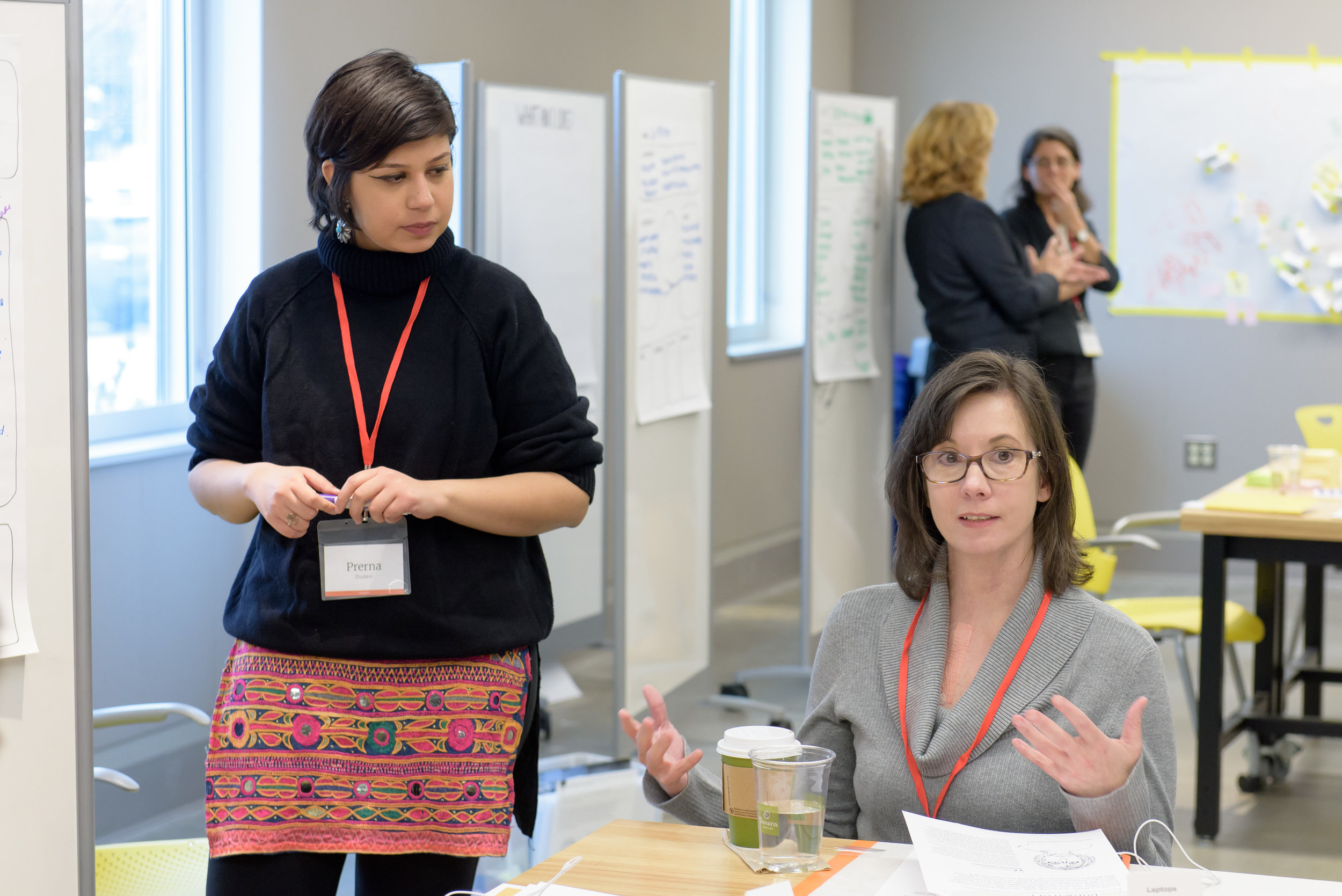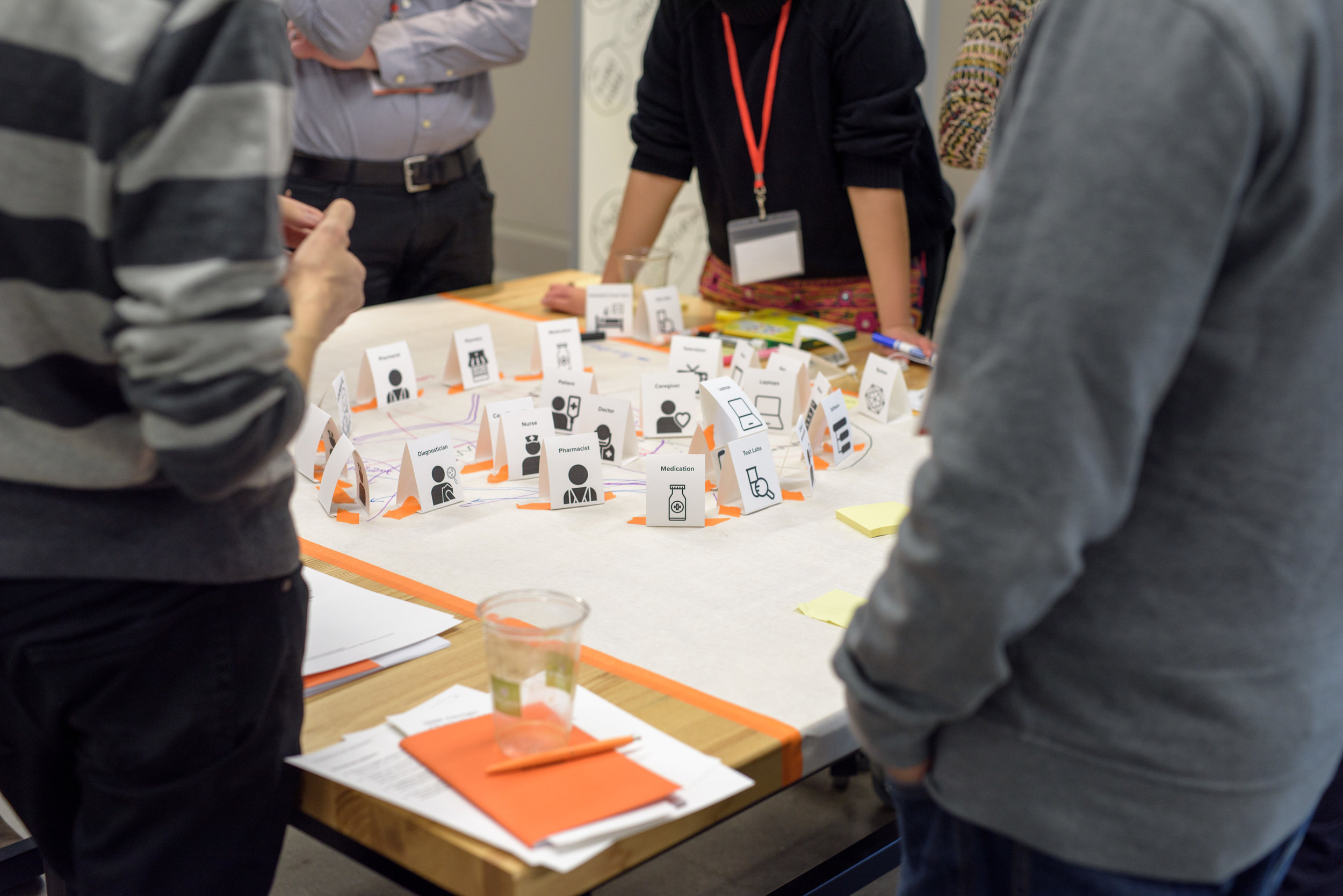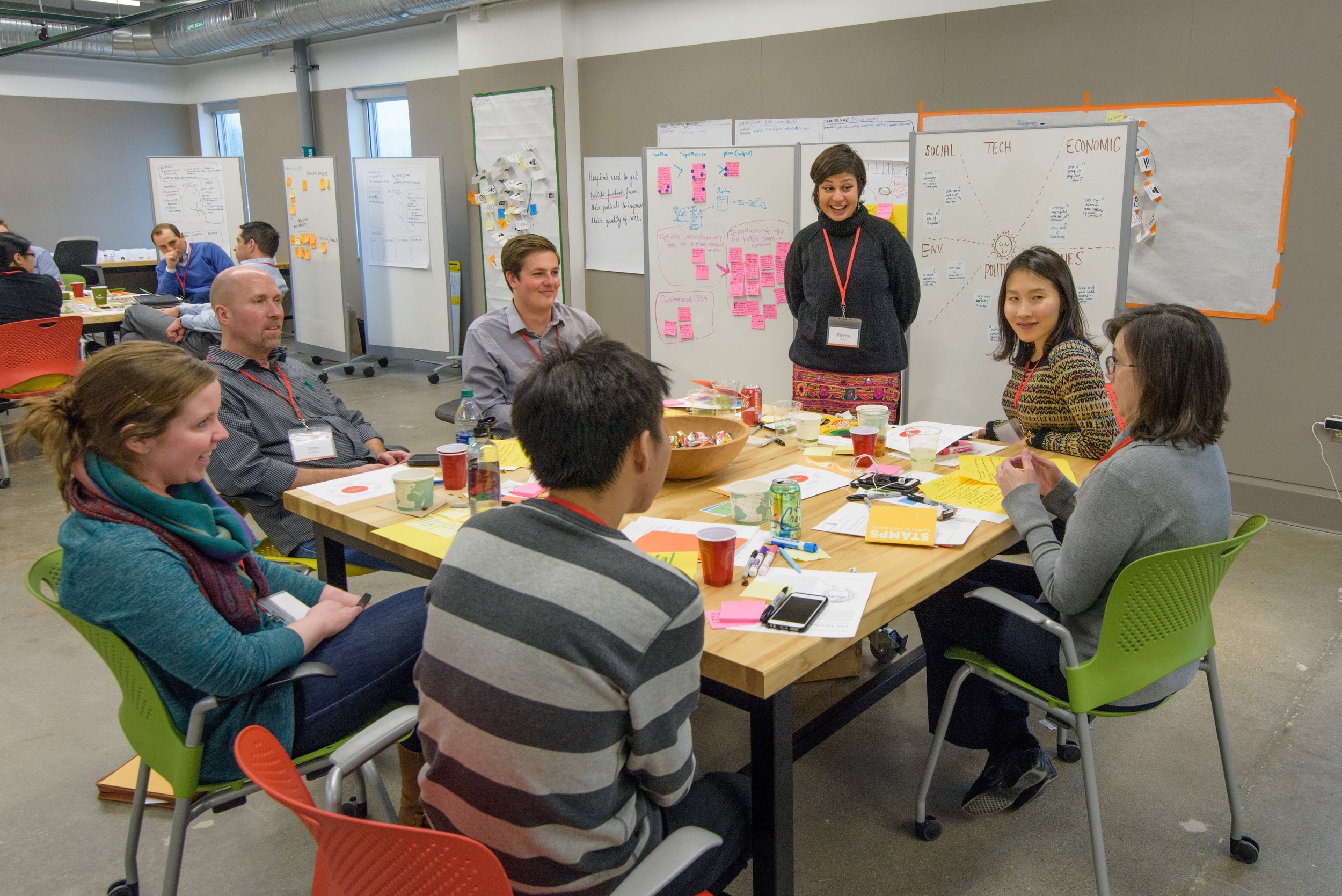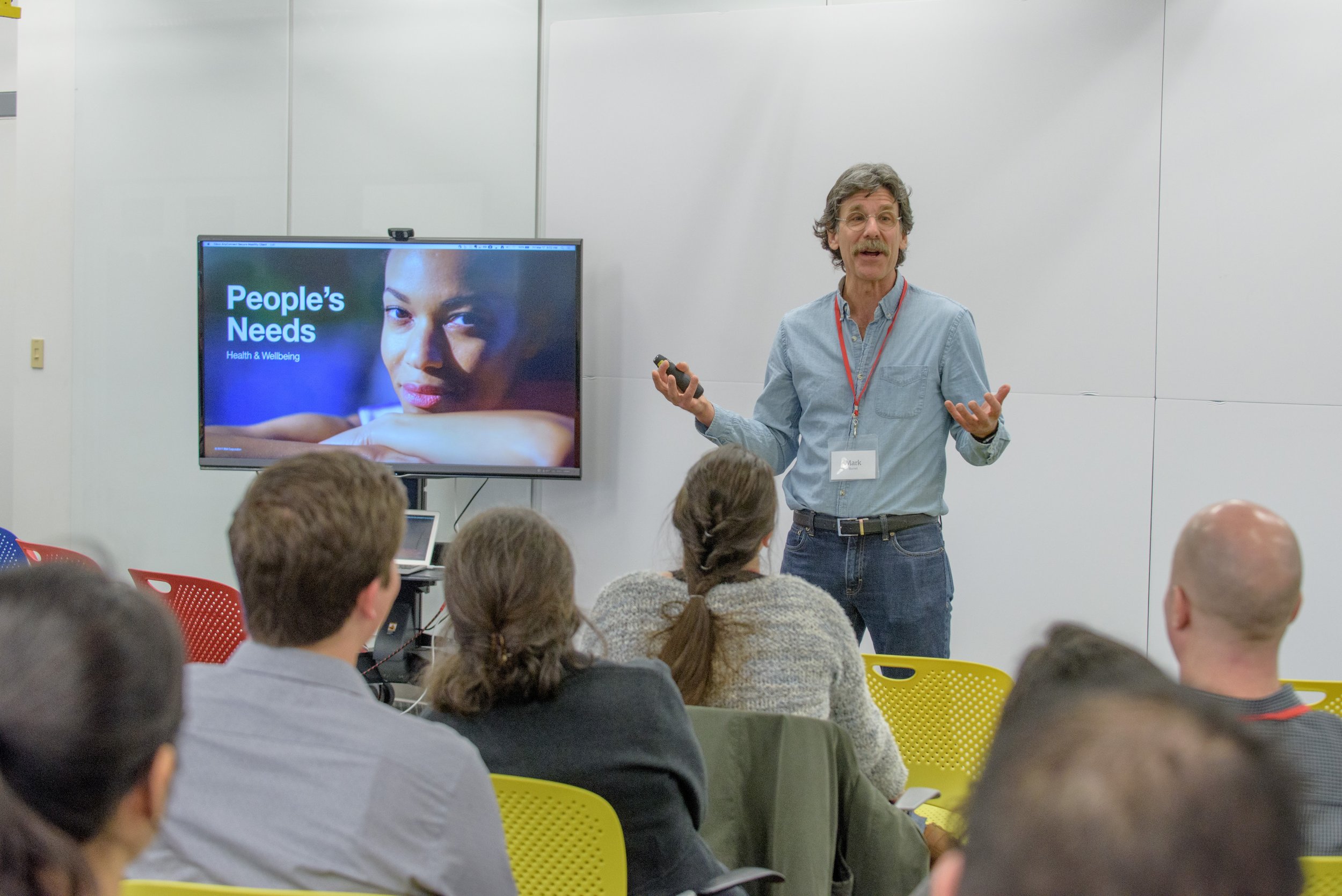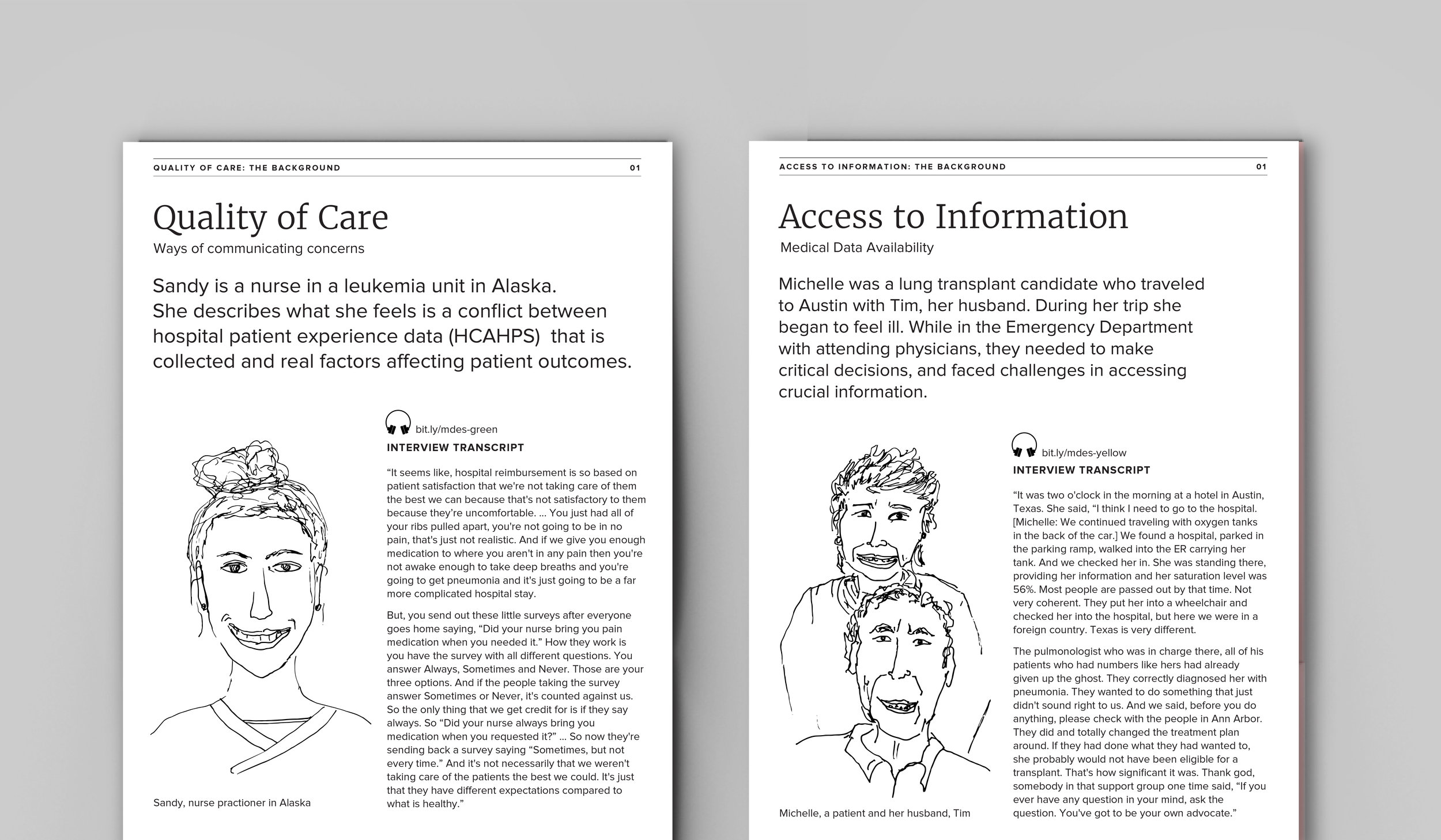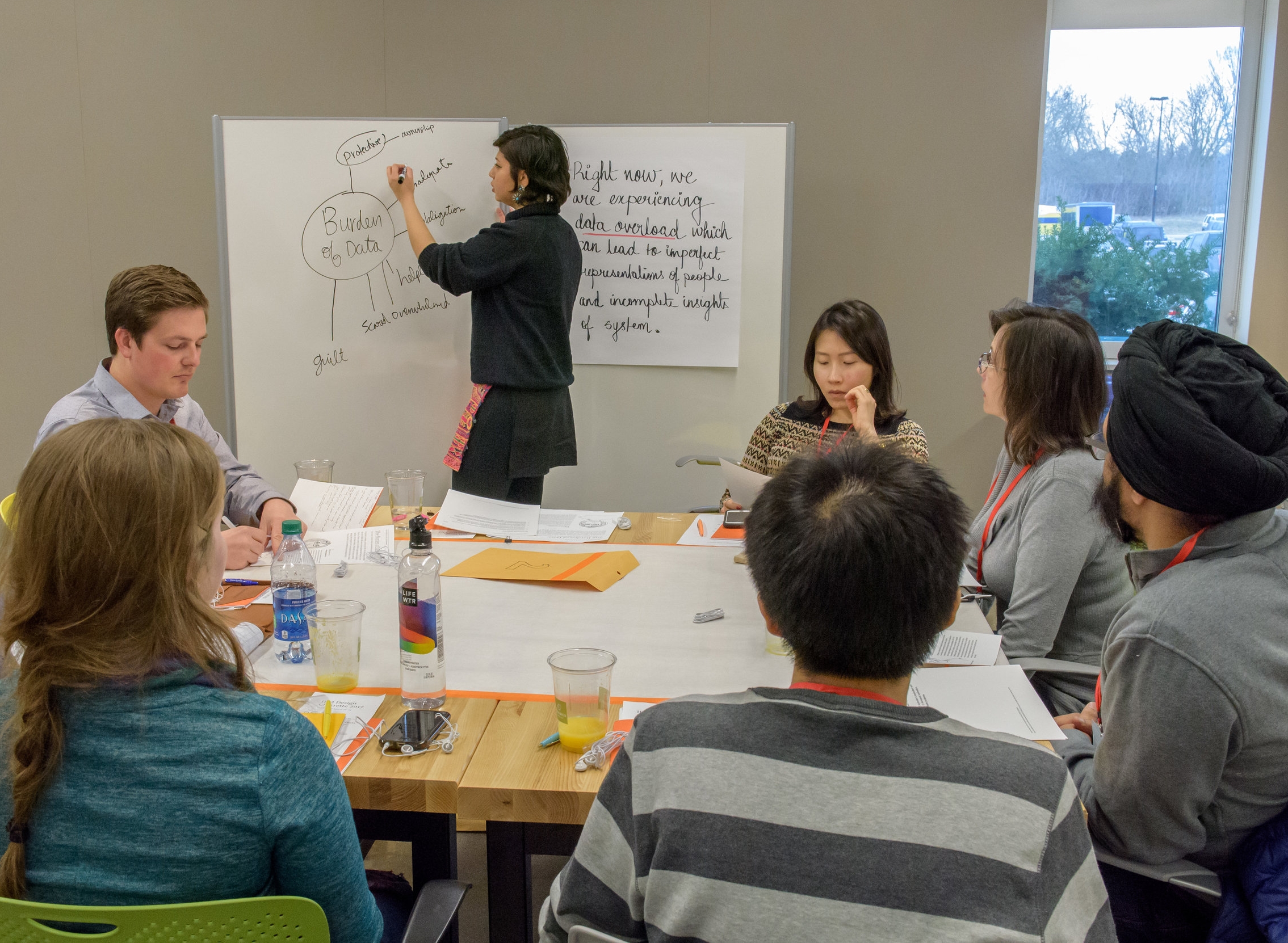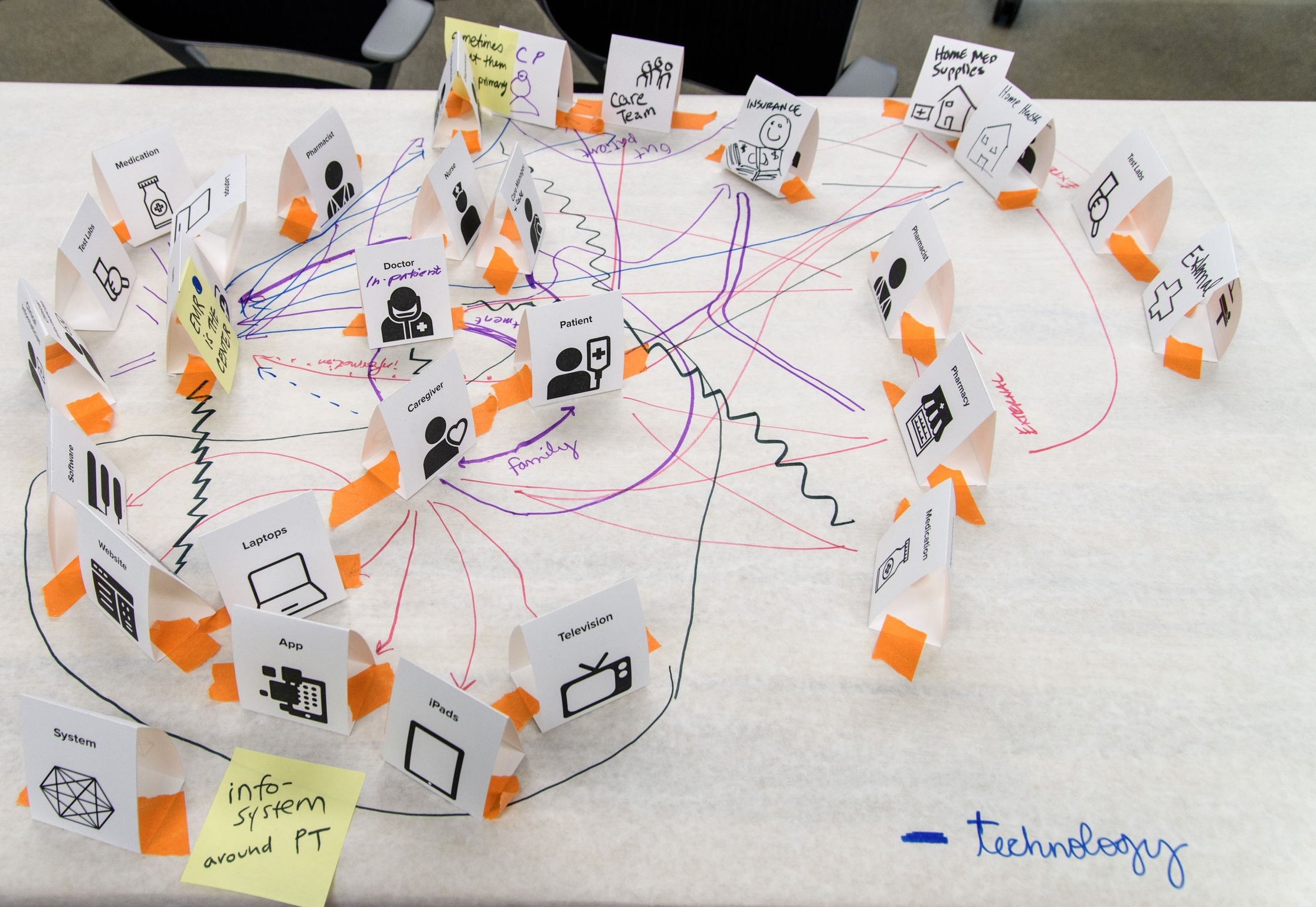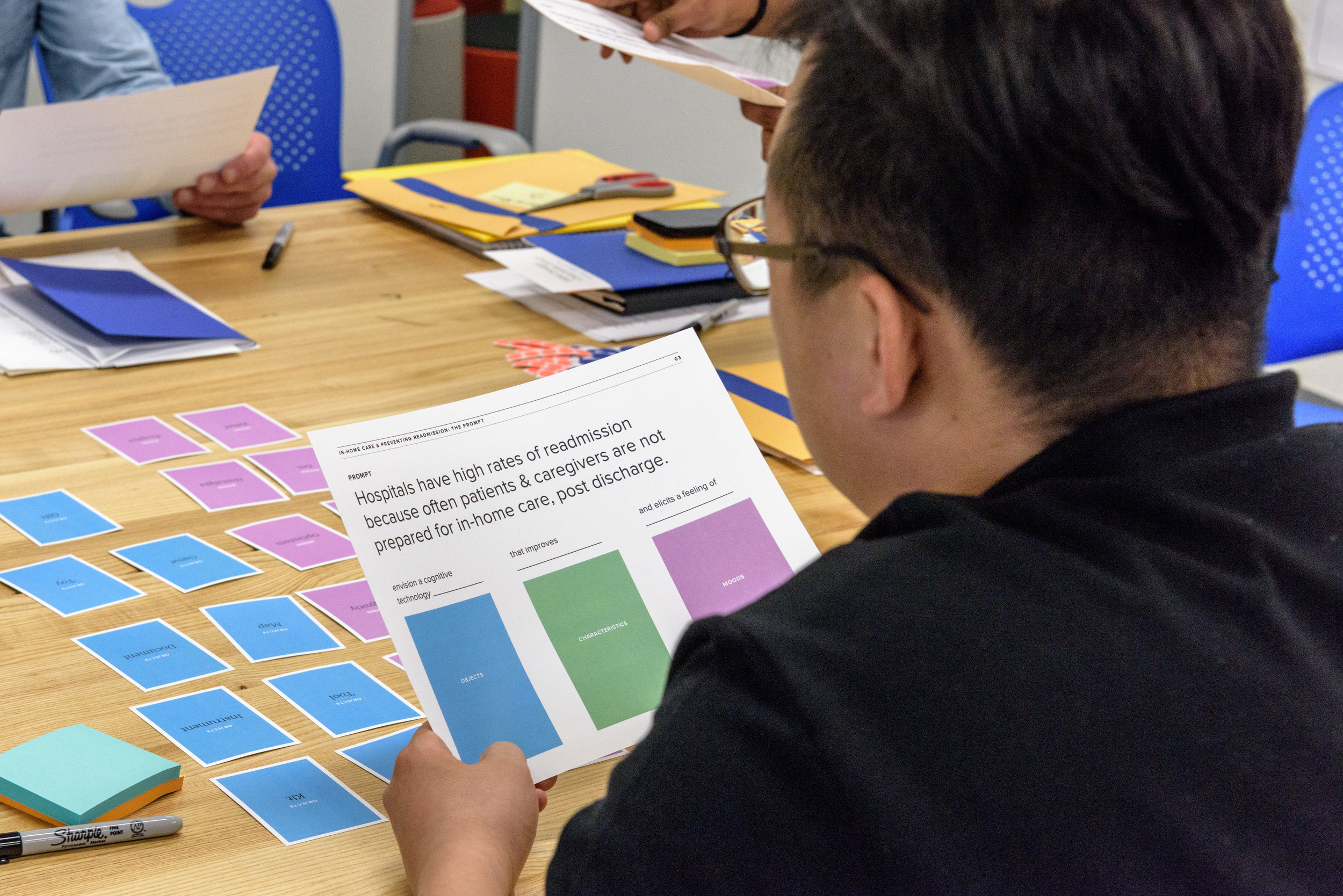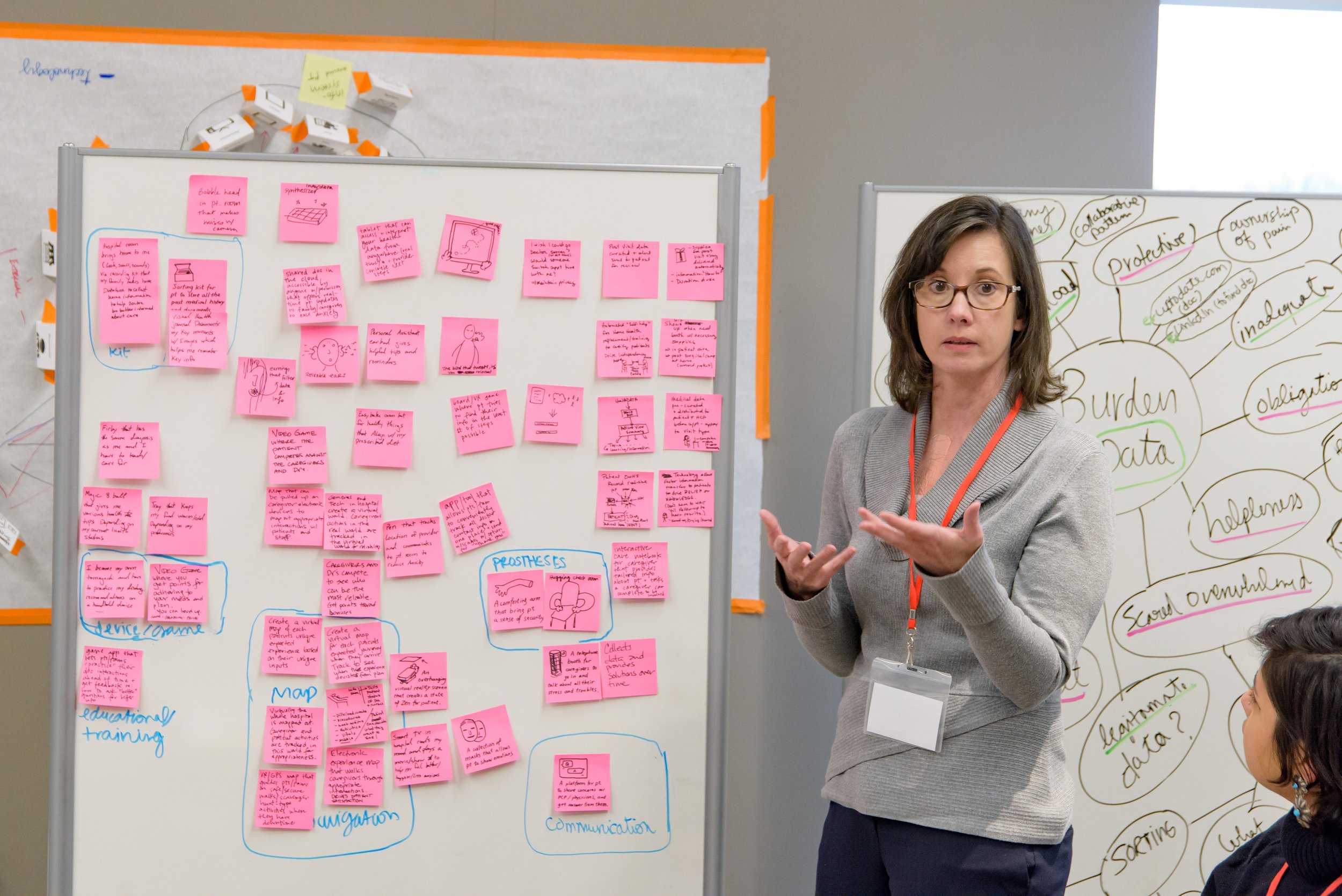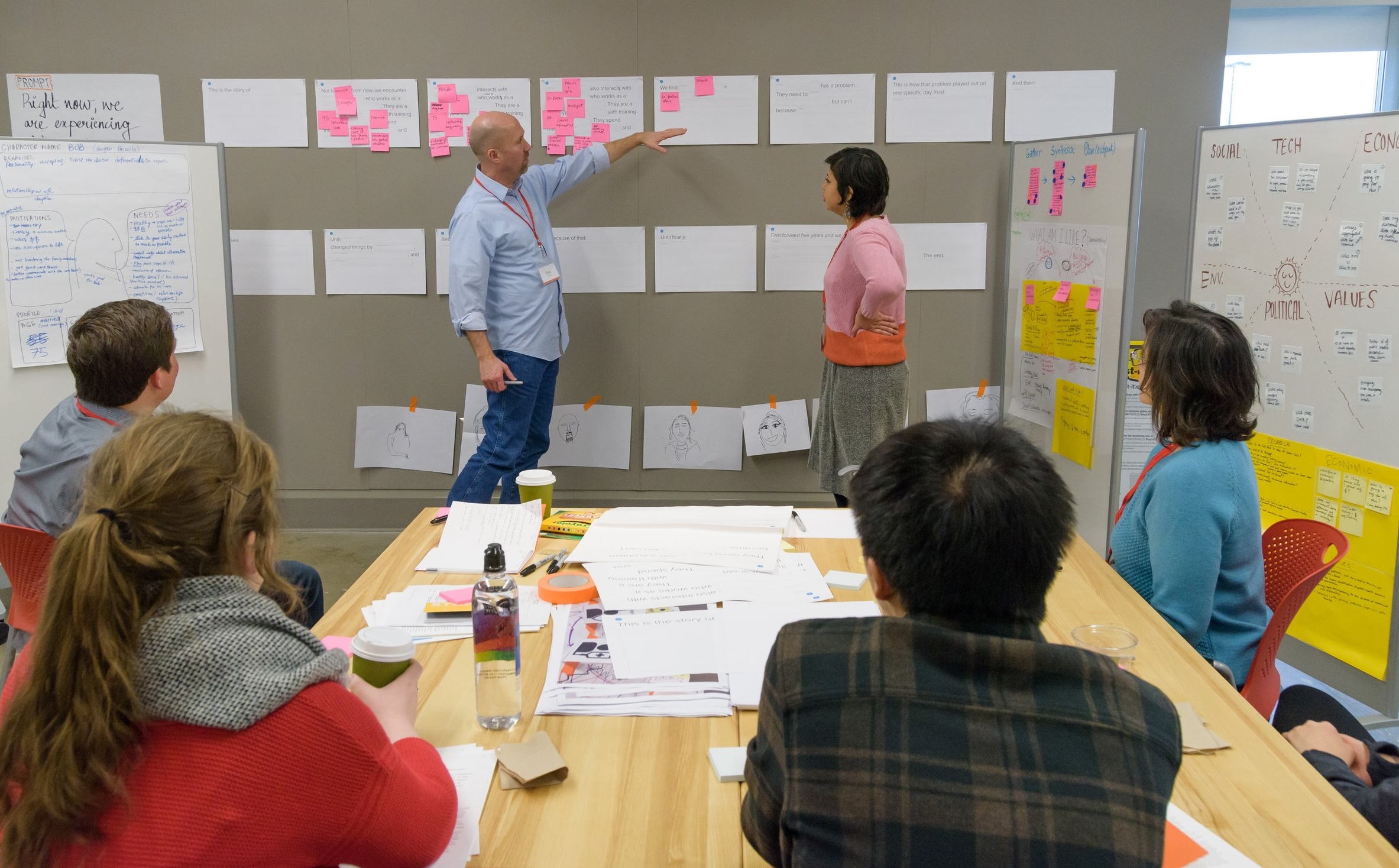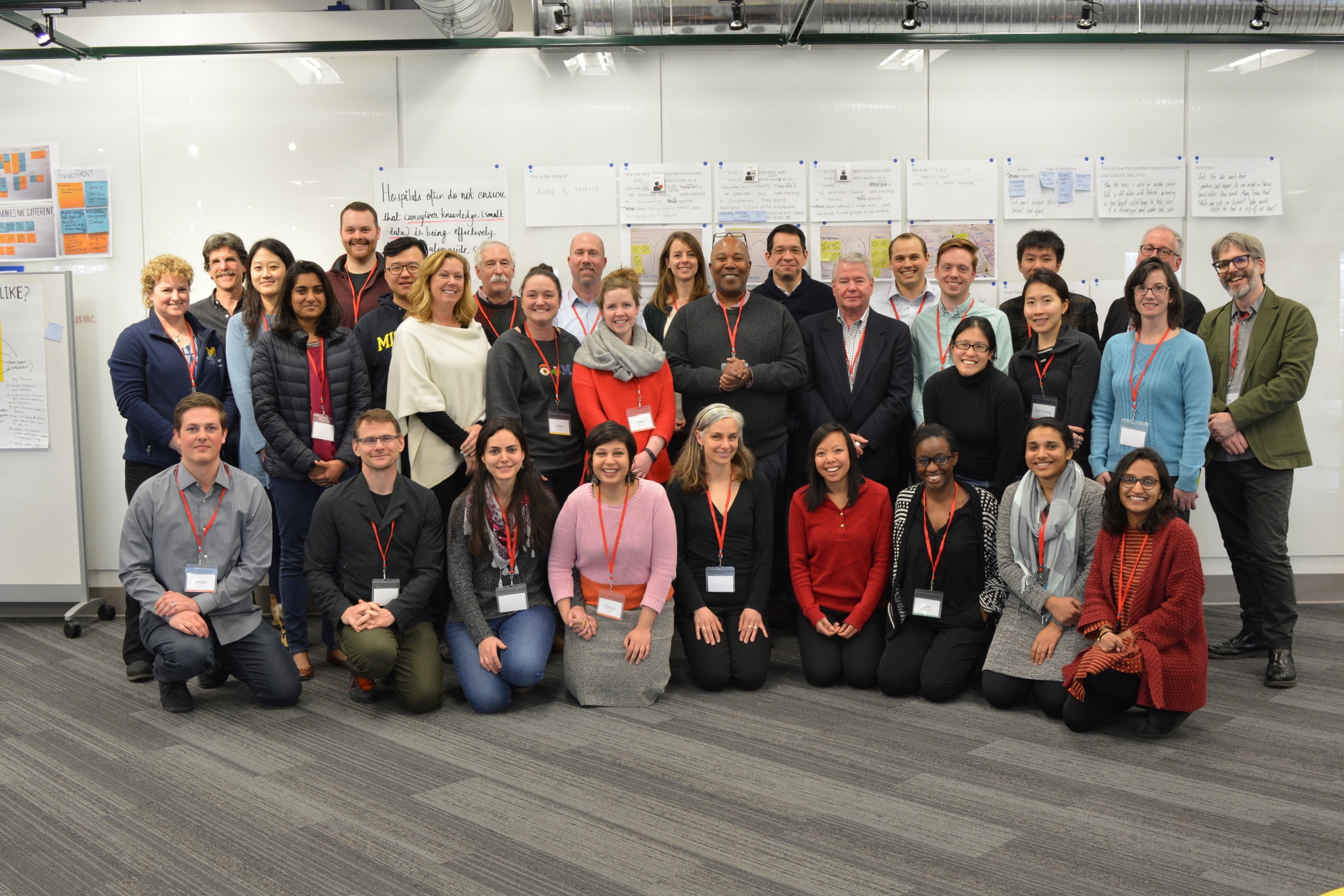How might we explore the intersection of cognitive technology
and human-scale healthcare & wellbeing?
IBM Watson Health approached our team with a proposition to hold a charette that demystified, defined, and advanced thinking on the use of cognitive technologies in healthcare. We facilitated a two day design charette with forty-four participants working in small teams to develop near-future scenarios of the use of cognitive technology to address family caregiver needs. The design charette brought together IBM team members, students, healthcare professionals, and C-suite executives from the field of manufacturing to develop ideas collaboratively.
Challenges included: (1) breaking hierarchies amongst participants and working to ensure that all viewpoints were heard, and (2) grounding participants in the real needs of family caregivers without having them present at the charrette.
Outcomes included a scenario developed by my team for an integrated technology that leverages IoT to help clinicians understand the patient more holistically. My team's examination of the psycho-social implications of the concept they developed led them to create a dystopian scenario that generated a lot of discussion on how cognitive technology interprets personal data and the value of owning ones own data.
Partners: IBM Watson Health
Role: integrative designer and facilitator working
four integrative designers
Extent of the project: two day charette
Tags: workshop design, workshop facilitation, game design, generative design, collaboration, futuring
Design Process.
The two-day design charette followed the Vijay Kumar “101 Design Methods” design process model.
Know People & Contexts.
Teams explored a predetermined problem space through exercises that help them visualize the people and environment integral to understanding context.
Leveraging our research at the University of Michigan Health System, we created problem statements around issues faced by family caregivers that were explored throughout the charette. Since many caregivers couldn't attend, we brought their voices and stories to the participants through audio recordings of our interviews.
Frame Insights.
Groups were guided through design-led activities that helped them create and analyze foundational shared understandings of the problem space.
To dive deep into understanding the problem space in each case, I facilitated my group through various design exercises and games such as: mind mapping, business origami, and character profiles. These activities leveraged the participants experiential knowledge and engaged them in a hands-on way.
Right now, we are experiencing data overload, which can lead to imperfect representations of people, and incomplete insights of systems.
—Team Problem Space
My team gained empathy for the characters in their case by understanding their motivation, needs, and behaviors through a design acitivty.
Explore Concepts & Frame Solutions.
Teams imagined interventions at the intersection of cognitive technology capabilities and opportunities within the healthcare field.
We created a brainstorming card game that helped participants explore wild ideas and think outside the box. Ideas were written on post-it's and participants grouped similar ideas, built on them, and came to consensus on their favorites through dot voting. The STEEPV framework was used to evaluate the implications of their ideas.
Participants brainstormed the Social, Technological, Economic, Environmental, Political, and Values (STEEPV) implications of the ideas they generated.
Realize Offerings.
Groups fleshed out their intervention and developed an in-use scenario of the intervention to share with the larger group of participants.
I facilitated my group through design exercises that helped them bring their ideas to life by asking them to imagine their ideas as a person and build out characteristics. Using a story formula we created, my group then developed a scenario of how their intervention would work in a given situation.
My group created the idea for "Big Doc," an integrated technology leveraging IoT—gathering and integrating data from the home environment (car, fridge etc.), social network (friends and family interactions), and patient history—synthesizing information along with big data insights, and visualizing these insights to communicate information in a preferred method.
““Thank you so much for inviting us to your inspiring design charrette! I know we learned so much – everything from “collaborative games” to express insights to the possibilities of how cognitive technologies can impact healthcare.””



